'We don’t seem to learn': 10 years after tragic Texas chemical explosion, risk remains high
WEST, Texas – The nightmares have eased, but the images remain singed in Michael Irving’s mind.
The blown-out apartment complex, its walls and roof sheared off and refrigerators and mattresses still visible inside. The mushroom cloud billowing menacingly into the North Texas sky. The single severed leg poking out of the rubble, boot still firmly on foot.
As the first law enforcement officer on the scene of the 2013 West Fertilizer Plant fire, Irving was the first to smell smoke, the first official to call in the fire and the first to begin evacuating people in harm’s way.
The ensuing explosion at the plant, triggered by 50 tons of fertilizer-grade ammonium nitrate, carved a crater in the earth 75 feet across and 8 feet deep. It killed 15 people – including 12 first responders – injured 260 others and shook the ground so deeply, sensors registered it as a 2.1 magnitude earthquake.
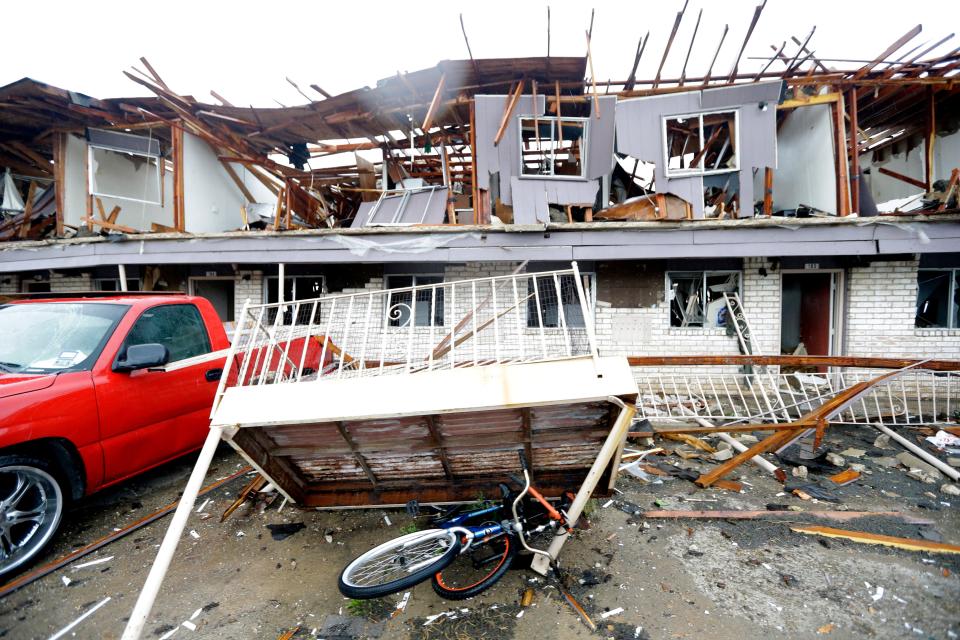
Ten years later, the town has mostly recovered from the devastating blast, one of the biggest industrial explosions in Texas history. But, for many, the trauma lingers.
For years, memories of that scene haunted Irving. Nightmares and anxiety attacks trailed him, eased only after months of therapy. His wife, Kimberly, knew only fragments of what he saw and endured that night. Only recently, a decade later, has he been able to recount that day.
“I will never be the same person again,” Irving said in an exclusive interview with USA TODAY. “There are parts of me that are just gone.”
Twenty-two minutes. That’s all the time Irving, firefighters and emergency responders had from his initial call to emergency dispatch at 7:29 p.m. until the explosion at 7:51 p.m. that blew a hole in the town.
The blast – the equivalent of 30,000 pounds of TNT – prompted the White House and federal agencies to intensify their focus on ammonium nitrate, a fertilizer that’s highly combustible and the key culprit in the West blast. Then-President Barack Obama ordered improvements in regulatory rules and traveled to Waco to speak at a memorial for those killed in the explosion.
Hear more: Correspondent Rick Jervis on USA TODAY's "5 Things" podcast
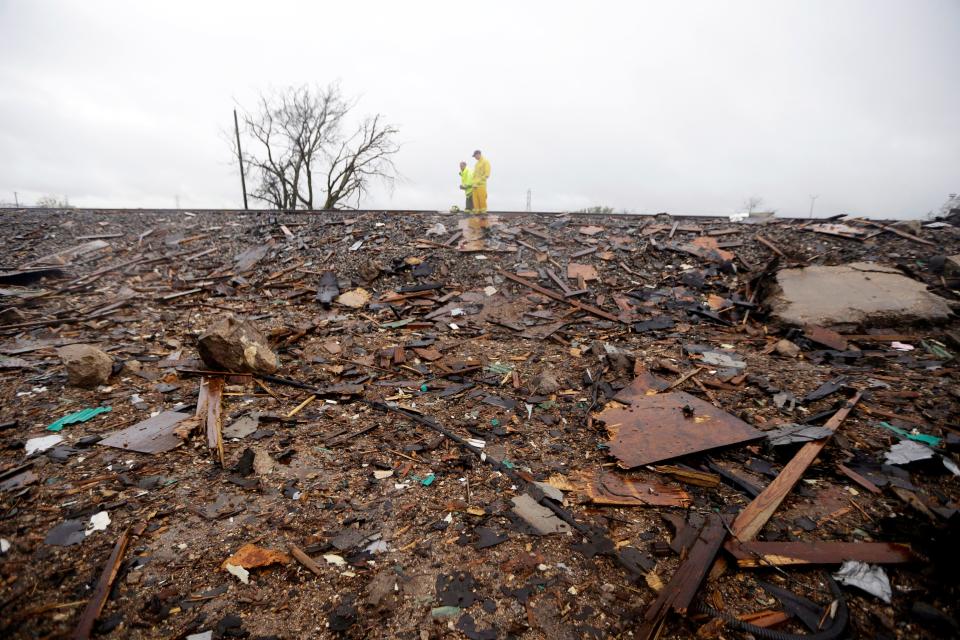
Still, federal officials and chemical safety advocates warn not enough regulatory changes have taken hold to make the U.S. any safer today from similar explosions than it was a decade ago.
“The [U.S. Chemical Safety and Hazard Investigation Board] is concerned that a terrible tragedy like West could happen again,” board chairman Steve Owens said.
Much of West, a city of 2,500 people located 80 miles south of Dallas, has improved since the blast, Mayor Tommy Muska said. New city and state ordinances bar chemical plants from storing ammonium nitrate in combustible structures within city limits, and new homes have replaced those battered by the blast, he said.
Still, many residents struggle with post-traumatic stress disorder and anxiety, despite years of therapy.
“You don’t ever get rid of it,” said Muska, whose home was destroyed by the blast. “It’s like one of those hidden, dark secrets: You don’t want anyone to know you’re broken.”
Another explosion: 18,000 cows killed at Texas dairy farm may be largest cattle killing ever
A town grows in shadow of chemical plant
Like many towns across America, the plant came first.
Incorporated in 1892, West began, as did many Texas outposts at the time, as a stop along the Missouri-Kansas-Texas Railroad.
By 1900, the railroad and available land – as well as the town's hotel, fire department, cotton mill and school system – drew large numbers of Czechs and Germans. Over the years, West built a reputation across Texas as a destination for Czech cuisine, especially the pastries known as kolaches.
Cotton and small grain production, though, along with cattle ranching, were the area's chief occupations. The West Fertilizer Company built its fertilizer building in 1961 in what was then the outskirts of town as a storage and distribution site for fertilizers, chemicals, grains and farming equipment, according to the U.S. Chemical Safety and Hazard Investigation Board.
Historic aerial photography from 1955, a few years before the plant was built, shows essentially nothing built in town north of Spring Street, on the northeastern edge, just railroad tracks stretching off toward Fort Worth through empty fields.
The city grew toward the plant. By 1970, a housing subdivision had crept a quarter mile northward. In 1972, the West Rest Haven nursing home was built 500 feet away. A playground and basketball court emerged across the train tracks, less than 150 feet away. An apartment complex, West Intermediate School and West High School all opened within 500 feet.
The fact that ammonium nitrate was piling up inside the plant so close to homes and schools never worried local officials or residents.
Perhaps more than anywhere, Texas had an understanding of what ammonium nitrate could do. One of the deadliest industrial disasters in U.S. history – triggered by the same chemical compound – had occurred six decades earlier, just a three-hour drive south from West.
“We don’t seem to learn from our mistakes,” Muska said. “Or we have a very short memory.”
A history of death and destruction
On the morning of April 16, 1947, a fire broke out in the cargo hold of the freighter SS Grandcamp, docked at the port of Texas City, in Galveston Bay.
The fire ignited about 2,300 tons of ammonium nitrate fertilizer stored in the cargo hold, sparking a chain reaction of explosions and fires that torched the port and killed more than 580 people. It's still considered the deadliest industrial accident in American history.
Despite the massive impact from that incident, it wouldn't be the last explosion involving ammonium nitrate.
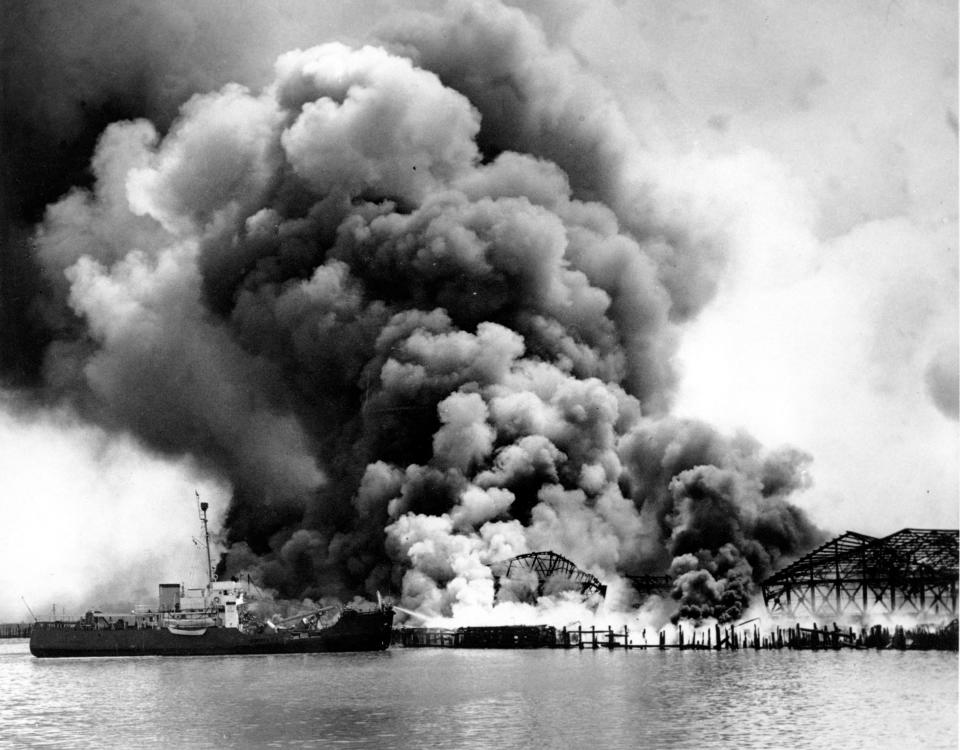
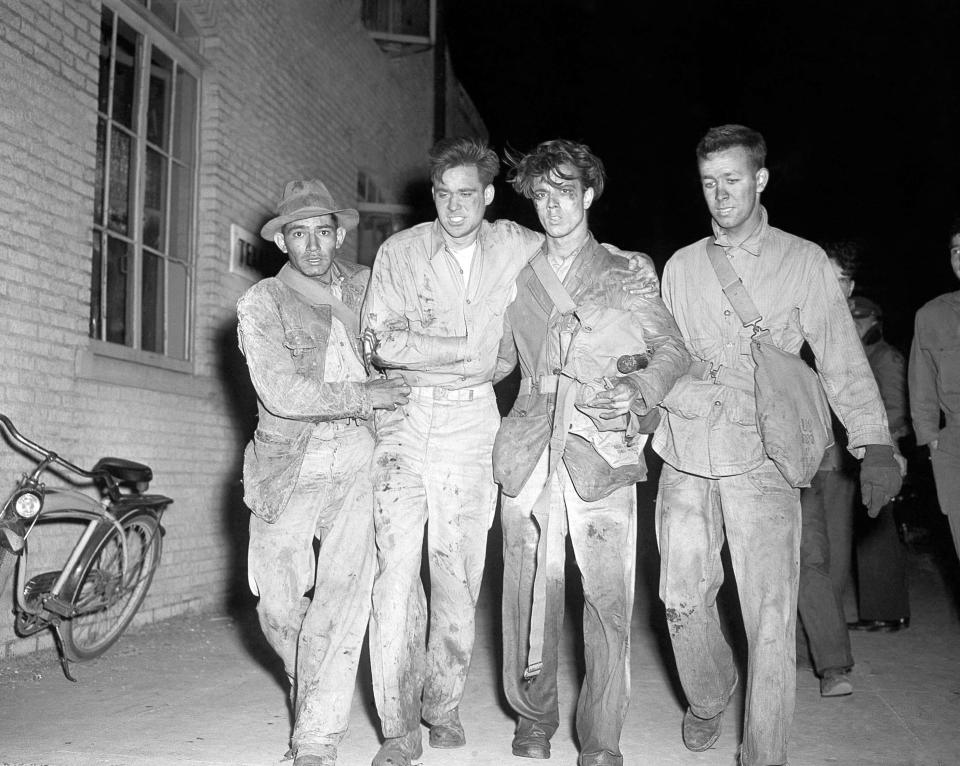
The men behind the 1995 Oklahoma City bombing used around 5,000 pounds of ammonium nitrate to detonate that explosion, killing 168 people and injuring more than 680 others. The bombers mixed ammonium nitrate with racing fuel to make a volatile substance that would billow into a fireball and burn intensely. One of the attackers, Timothy McVeigh, was later executed for his role in the bombing. Prosecutors said McVeigh's accomplice, Terry Nichols, purchased 2 tons of ammonium nitrate used in the bombing from a farming supply company in Kansas. Nichols was later sentenced to life in prison.
In 2020, the world was again reminded of the deadly potency of ammonium nitrate when more than 2,000 tons of the compound exploded inside a port storage building in Beirut, Lebanon, killing more than 200 people, injuring 7,000 and causing more than $15 billion in damage.
In stable conditions, the small white pellets of ammonium nitrate are harmless and often mixed with other chemicals to fertilize fields. But as an oxidizer – or oxygen-rich compound – it has the power to rapidly accelerate fires or explosions, according to the National Fire Protection Agency. Even small quantities of it exposed to fire could set off explosions.
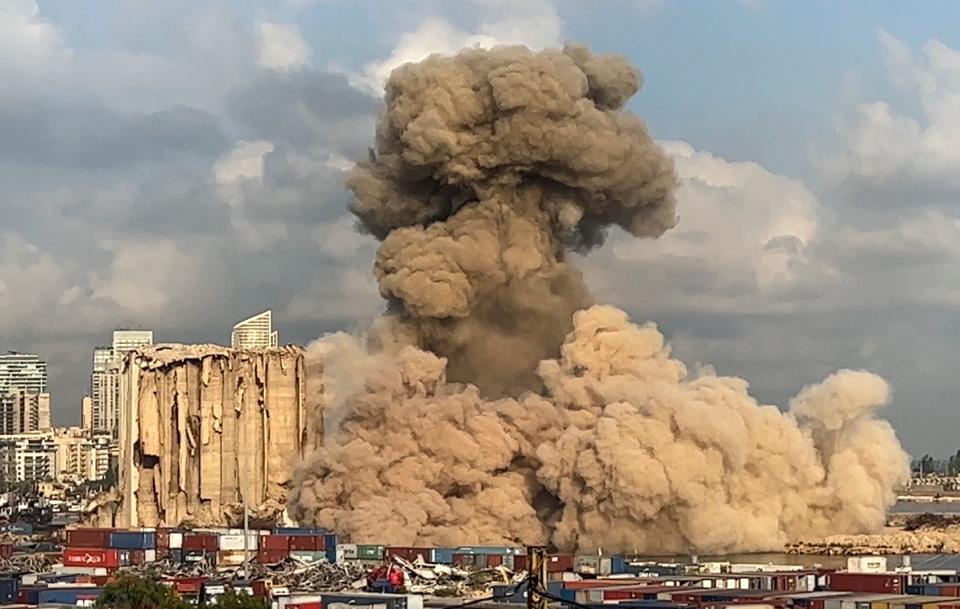
In its 267-page investigation into the West explosion, the U.S. Chemical Safety and Hazard Investigation Board found that the responding firefighters at the West Fertilizer Plant were undertrained and unprepared for combatting a fire in a structure storing ammonium nitrate. It also pointed to a lack of federal oversight on the chemical compound.
Of the 19 recommendations issued by the board, nine still have not been implemented, including suggesting that the Environmental Protection Agency add ammonium nitrate to a list of chemicals that receive stricter oversight and urging the Occupational Safety and Health Administration to add the compound to its list of highly hazardous chemicals.
As millions of Americans live near ammonium nitrate storage silos, the risk of another deadly explosion in the United States remains very real, said Jordan Barab, former OSHA deputy assistant secretary under Obama who has studied the West incident.
“Given the West explosion, possibly there’s more knowledge in the industry about [ammonium nitrate],” he said. “But I’m not really confident that, overall, there’s more safety.”
He added: “Basically, on the regulatory front, very little progress has been made.”
A routine call, then smoke and fire
Ammonium nitrate and explosions were the furthest things from Michael Irving’s mind the morning of April 17, 2013. He went on his usual 5-mile morning run, showered, dressed and, later that day, drove to work at the West Police Department. He had an early dinner with a friend at the Pizza House on West Oak Street, then drove slowly toward West City Park.
Irving, then 38, had been working at the police department for seven years. He lived in nearby Waco but took the late shift job in West to be able to pursue his bachelor’s degree during the day. A military veteran who had spent more than 13 years as a gunner's mate in the Navy and Reserves, including deployments to Kuwait and Jordan, Irving dreamed of completing his studies and getting a job with the U.S. Border Patrol or another better-paying federal agency.
But he grew to enjoy his time in West. People were friendly – though he was still considered an “outsider,” since he lived 20 minutes south on Interstate 35 – and crime rarely rose to anything worse than vandalism or petty meth and marijuana deals.
Lately, the department had gotten reports of graffiti in the park’s bathrooms, so he made his way there. As he approached, he noticed a group of around 10 high schoolers playing pickup basketball.
He also smelled smoke. Pulling up at the park, a man walking his dog crossed the street in front of him and pointed to the West Fertilizer Plant across the railroad tracks. Irving craned his neck and saw white smoke pouring from a small window near the structure’s roof.
He picked up his car’s radio and called it in.
7:29 p.m.
___
“Could you tell West Fire that the West Fertilizer [plant], one of their buildings is on fire?” he told the dispatcher, his voice clear and calm. “There’s heavy smoke coming out the top of it.”
Irving had helped with numerous fires in the past, mostly blocking off streets and keeping onlookers back. It was a routine call.
“It wasn’t that big of a concern to me,” he said later. “There was no urgency in my voice.”
Irving drove across the train tracks and down Jerry Mashek Drive to get a closer look. As he neared the plant, he saw flames licking out of the building. Unaware of the dangers of ammonium nitrate lurking in the structure, Irving was far more concerned with the large white tanks on the property holding anhydrous ammonia, a substance he knew occasionally exploded meth labs and could be deadly if inhaled.
He reversed his cruiser and parked it at an angle along Jerry Mashek Drive, blocking southbound traffic.
Moments later, a familiar voice came over the radio. Joey Pustejovsky, a firefighter with the West Volunteer Fire Department, asked Irving to block off traffic leading to the fire. Irving replied he was already doing so.
Over the previous few years, Pustejovsky, 29, and his wife, Kelly, had become close friends with the Irvings. The four played bingo together or met for Sunday cookouts at the Pustejovsky home. Irving admired Joey's easygoing style and how he was one of the few people at City Hall – Joey was also city secretary – he could occasionally steal a smoke with.
Earlier that year, the couples had reserved a two-bedroom condo in Port Aransas on Texas’s Gulf Coast for June, where they planned to spend a few days together on the beach.
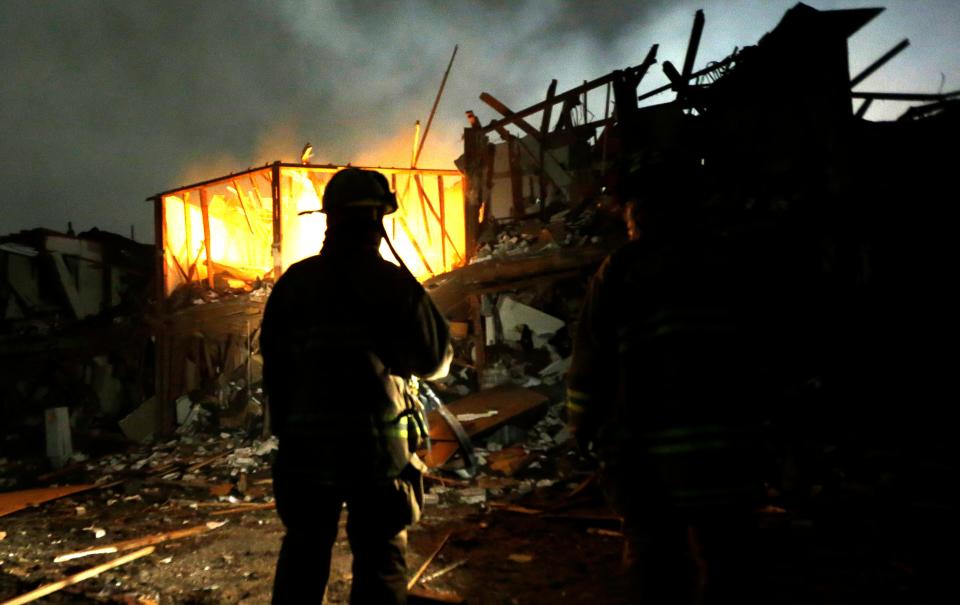
As the fire consumed the plant, Irving thought of the teens on the basketball court, just a few hundred feet away from the plant and fire. He drove toward the park, lights and sirens blaring. His top concern: Leaked anhydrous ammonia wafting into the park.
As he sped down Jerry Mashek Drive, he passed Fire Engine 1, driven by Pustejovsky, rushing north toward the fire. Irving continued toward the park.
At the park, some of the teens had stopped playing to film the fire with their smartphones. Heavy black smoke now billowed from the plant. Irving got on his cruiser’s P.A. system. This time his voice was not calm.
“Get the f--- out of here!” he bellowed from his car’s speakers. “Now!”
The urgency and volume of his voice made everyone in the park quickly evacuate – and it carried over to the West Terrace Apartment Complex, a 22-unit apartment building next to the park and around 450 feet west of the plant. Residents there later said Irving’s urgent instructions from the park motivated them to flee their apartments as well.
Irving waited until the last car left the park and then sped back to Jerry Mashek Drive, south of the fire. He angled his cruiser across the road, blocking traffic. He watched as fire engines and firefighters swarmed the burning plant.
7:38 p.m.
___
Robbie Payne, 51, had recently returned from vacation, so his West Volunteer Fire Department pager had been turned to silent and he hadn’t heard the calls pinging over dispatch.
Payne had been a volunteer firefighter with the department since 1986, working his way up from firefighter to assistant chief and chaplain, and then returning to firefighter. When not running the family funeral home business, he helped put out West’s fires.
On the early evening of April 17, 2013, Payne was home when a phone call from his father-in-law alerted him to the fertilizer plant fire. He walked out of his garage and saw smoke rising just beyond the tree line, less than a mile south. Payne stepped into his boots, pulled on his bunker gear – the protective clothing firefighters wear – and drove his wife’s Ford Expedition, following the smoke to the plant.
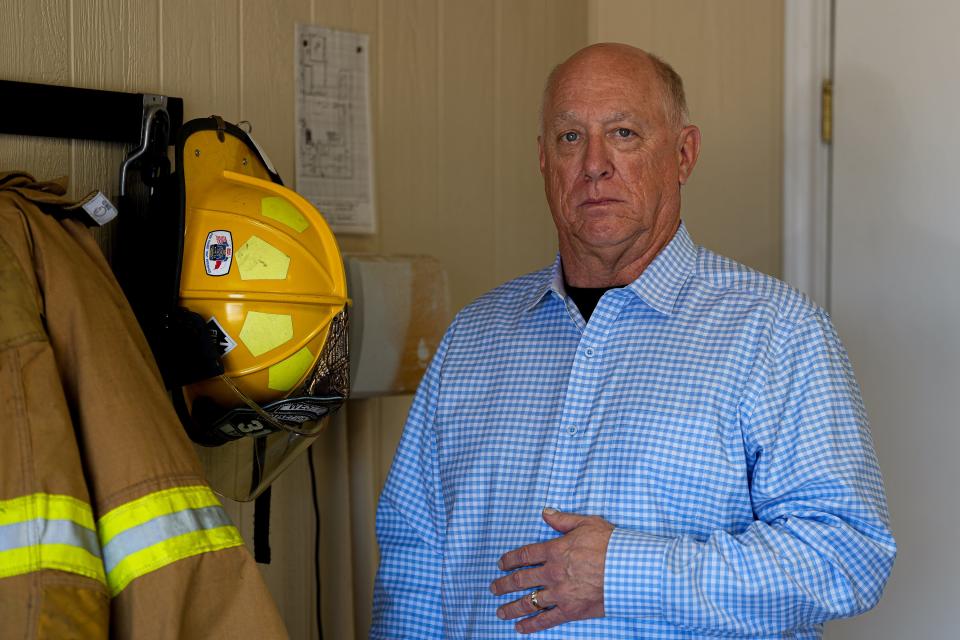
Like others that day, he was mostly concerned about the anhydrous ammonia tanks.
“Our biggest concern was the fire. The anhydrous ammonia tanks were the second concern,” Payne later recalled. “We didn’t think about ammonium nitrate.”
He arrived at the scene as other firefighters were already attacking the flames with hoses attached to a brush truck and engine truck. He stepped into the fight.
7:47 p.m.
___
Curious onlookers gathered at Irving’s roadblock about 1,000 feet south of the fire, ogling at the flames and smoke rising from the plant. Irving waved through a fire engine.Another firetruck tried to attach to a nearby hydrant, but the hoses weren’t long enough to reach the fire.
Pustejovsky’s wife, Kelly, drove up with a case of bottled water for the firefighters, as she often did. Irving instructed her to hang back, still feeling uneasy about the anhydrous ammonia tanks.
The nearby high school had let out hours earlier, but educators who had gathered there for a conference trickled out of the building and walked over for a look. Irving turned to face them, keeping them at a safe distance.
7:49 p.m.
___
Rose Ann Morris, West Rest Haven's administrator, had sat down to dinner at her home with her husband, son and daughter-in-law when she received an urgent phone call from the charge nurse on duty at the nursing home about the nearby fire.
Morris thought of the 130 residents at the nursing home, many of whom were unable to move easily by themselves. She told the nurse to pull the fire alarm, which would cut off the air conditioning and prevent any smoke from seeping into the building.
She got into her son’s Dodge truck with her other family members and headed to the nursing home, four miles away, to see how they could help.
“The only thing I was worried about is how big is the fire and how close is it going to get to the nursing home,” Morris said. “Nothing to do with any kind of explosion.”
7:50 p.m.
___
The blaze drew four volunteer firefighters attending an EMT class in town, as well as a Dallas-area firefighter who showed up to help. But with their hoses unable to reach the nearest hydrant, officials realized they didn’t have enough water to fight the fire.// They were considering pulling back and focusing on evacuating nearby homes and businesses.
At Irving’s roadblock, the crowd stared and aimed smartphone cameras down the road. Irving turned to face the scene. The storage building was fully engulfed by flames. He could see his firefighter friends scrambling around the building, pointing firehoses at it.
Inside, flames and burning embers were heating up piles of ammonium nitrate.
7:51 p.m.
___
What Irving remembers is everything going strangely silent in the milliseconds before the explosion, as if the blast was sucking all the noise from the world to gather energy and strength and then ...
KA-BOOM!
Like the sonic boom produced by fighter jets punching through the sound barrier over the Pacific when he was in the Navy aboard the USS Abraham Lincoln. Only louder. The sound of the blast was followed by a massive mushroom cloud billowing up toward the sky and rushing out at him, its fiery stem pulverizing everything in its path, devouring the space where the plant and his friends stood moments before.
A single thought bubbled in Irving’s mind: “I’m dead.”
The concussion waves rippled past Irving and his car. Surprisingly, they didn’t knock him down. Debris rained down – chunks of roof, tractor parts, plumbing fixtures – and Irving dove for cover behind a nearby truck. A steel pipe clanged down inches from his foot. Dryly, he thought to himself: Great, I've dropped back here for cover, and now there are pipes falling on me.
Irving’s ears were ringing and chemical burns stung his arms, face and lungs, but adrenaline got him on his feet, scanning the scene. A woman ran up carrying her daughter, whose leg was bleeding from a deep gash. Irving pulled a blue Adidas hoodie from his cruiser and tied it as a tourniquet around the girl’s leg. He handed her to someone nearby with a truck and told them to put their hazard lights on and drive all the way to the nearest hospital, no stopping.
Kelly Pustejovsky appeared, screaming, “Where’s Joey! Where’s Joey!”
Irving knew the most likely answer. But he couldn't voice it – not now, not here.
He blocked Kelly from rushing toward the scene, until someone came from behind, picked her up and hauled her away.
Blown from the blast
Payne was on the east side of the office building. He had been talking to other firefighters, deciding where to best position himself. He had been onsite for just seven minutes when the blast hit. The concussion threw him back 10 yards in the air and into a vat of molasses. His memory cut out at that point.
He came to as hospital staffers wiped him clean with cold water, then promptly passed out again. Payne spent several days in intensive care and two weeks total in the hospital. He had nerve damage to his right shoulder, a broken left ankle, broken ribs, broken cheek bones, five teeth blown out and a busted eardrum that required surgery to fix. Extensive rehab followed for the next six months.
Five longtime friends and fellow firefighters died in the blast.
"We lost some great guys," Payne said. "Guys I grew up with."
'Everybody's dead in there!'
The pickup truck carrying Morris, the nursing home administrator, had just rolled up to a stop sign on Main Street when the explosion rocked the truck, startling everyone inside. Her son-in-law sped toward the nursing home.
As they neared the facility, the landscape grew increasingly apocalyptic: Windows blown out on homes, doors dangling on hinges, roofs caved in, houses splintered apart – all while plumes of black smoke drifted down streets. One house was completely alight.
At the nursing home, every single window and most doors were blown out. One side was caved in, bricks scattered on the lawn. Morris screamed, “Everybody’s dead in there!”
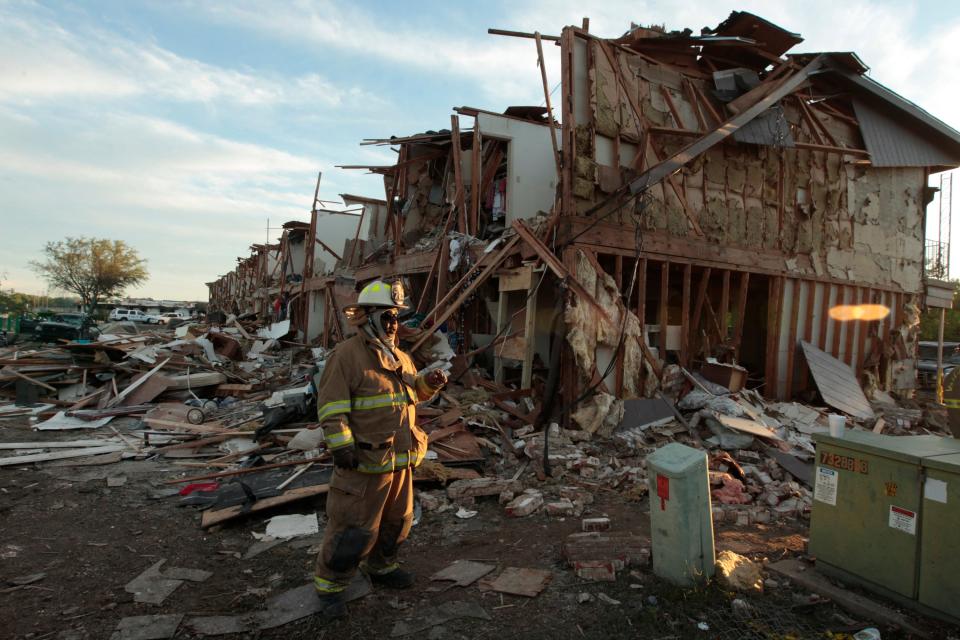
She and her family entered through an open doorway on the west side of the building. Inside, wires, sheet rock and insulation dangled from the ceiling. The floor was covered in debris, and walls were pushed over. The sprinkler system had been triggered and water covered the floor.
She began to hear cries for help from residents. Some were trapped in their rooms, debris blocking the doorway. Others were in shock or unable to get out of bed. Thankfully, all seemed to be OK.
Morris realized the residents, many of whom used wheelchairs or needed help walking, couldn’t be evacuated through the lobby. She and her staff wrapped residents in blankets or propped them on mattresses and carried them out through blown-out bedroom windows. More people – high school kids, neighbors, the local priest – showed up to help. Morris said she’s grateful most of the 130 residents made it out OK – though one of them, Adolph Lander, 96, suffered a fatal heart attack after being evacuated and was counted as one of the 15 fatalities.
Cuts, concussions, blast injuries, broken bones
Up on Jerry Mashek Drive, two firefighters staggered away from the explosion site. Irving sprinted over, propped himself under the arm of Assistant Fire Chief Emmanuel Mitchell and helped him to an impromptu triage site by the high school. Firefighter Eddie Hykel collapsed on the street. Irving ran, scooped him up and helped him to a truck, which sped away to a hospital.
As he helped the wounded to triage sites, Irving was gripped by the fear of a second explosion. He and another law enforcement officer spread out through the surrounding neighborhood, knocking on doors and evacuating homes for a mile south to Oak Street. The blast created a surreal landscape: Some homes were on fire, others untouched.
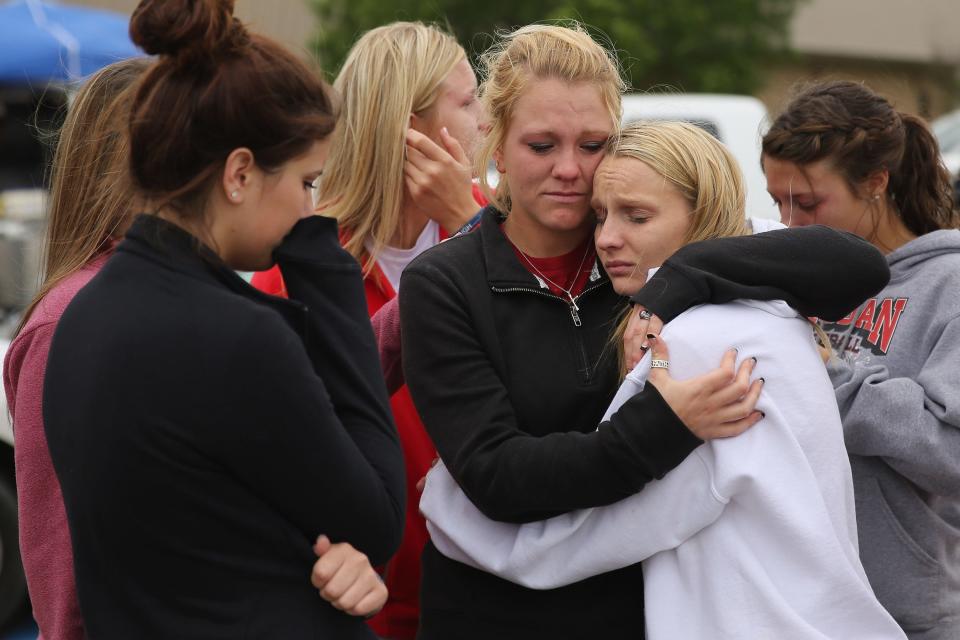
At the West Terrace Apartment Complex, where some residents had heeded Irving’s earlier evacuation commands and fled, the explosion had blasted through the building's east walls and blown off its roof, exposing mattresses, clothes and other personal items inside.
Irving worked all night, until 8 a.m. the following day, and then drove home and collapsed into Kimberly's arms, sobbing.
All told, 15 people died that night, including his close friend Joey Pustejovsky and other West firefighters he knew, four out-of-town firefighters who had rushed over from the EMT class and two residents of the West Terrace apartments.
More than 260 people checked into area hospitals with injuries including cuts, concussions, hearing problems, eye injuries, blast injuries, broken bones, burns and inhalation injuries. The blast battered homes as far as two miles away, according to the chemical board report.
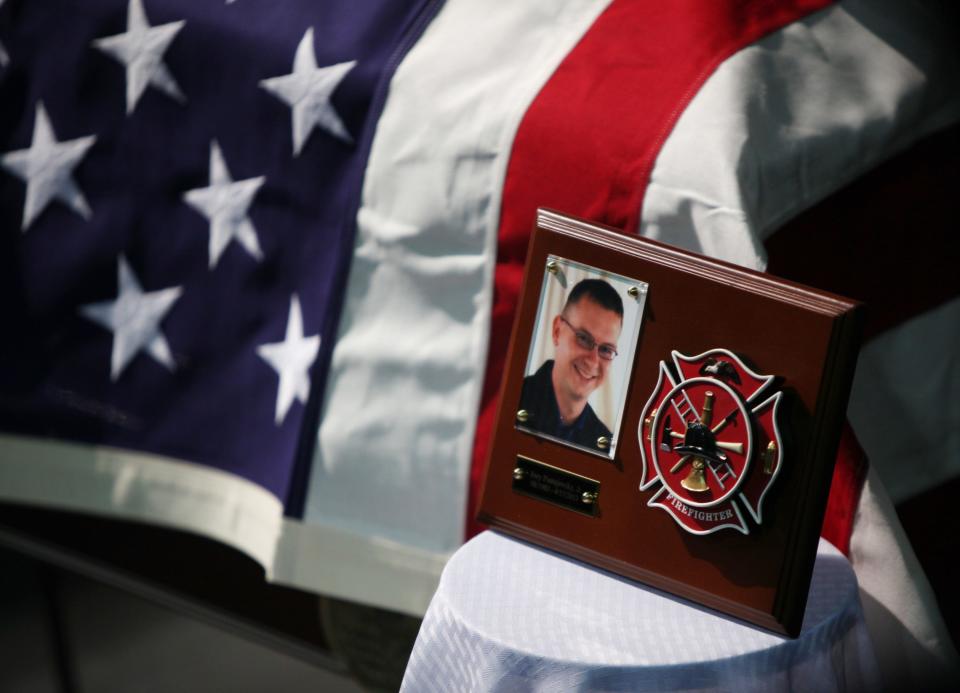
Around half of West’s 700 homes were damaged by the explosion, with 142 destroyed beyond repair. The city's high school, middle school and intermediate school were all heavily damaged, as were the nursing home and park.
A railcar loaded with more than 100 tons of fertilizer-grade ammonium nitrate – more than three times the amount in the blast – toppled during the explosion but did not detonate, the report said. If the contents of the railcar had detonated, “the damage, injuries, and fatalities would have been significantly worse,” it said.
The city that came together
The next few months were increasingly challenging for Irving. The West Terrace complex, splintered and exposed, sat as a constant reminder of the blast’s destruction. One day, a West police officer tasked with documenting the scene showed Irving photos of the blast site: Stacks of metal debris where the plant once stood, a destroyed fire engine and a severed leg sticking out of the rubble. The image haunted him for months.
Irving swelled with inexplicable anger. He would come home from work and punch holes in the walls. Nightmares stalked his sleep. Sometimes it was blood-stained rubble, other nights the mushroom cloud billowing into the sky, the images jarring him awake.
Eddie Hykel, the firefighter who had collapsed on the street near Irving, had a string of surgeries and spent months in rehab to repair his broken body. After that, Hykel saw Irving again for the first time and broke into sobs.
“You saved my life,” he told Irving.
“No, Eddie,” Irving replied. “I just carried you to a truck.”
June arrived and with it, the time for the couples' planned beach trip to Port Aransas. But Joey Pustejovsky was gone.
Michael and Kimberly Irving and Kelly Pustejovsky decided to go anyway.
One day while at the beach, the three friends decided to get tattoos together. Michael had Joey’s badge number – “3107” – as well as EMT and police badges inked on his left shoulder. Kimberly got a yellow rose (Joey’s favorite) and an infinity cross (for Irving) on her back, along with "John 15:13." The passage – "Greater love has no one than this: to lay down one’s life for one’s friends" – had been bookmarked in Joey's Bible. Kelly had angel wings with Joey’s birth and death date inscribed on her foot.
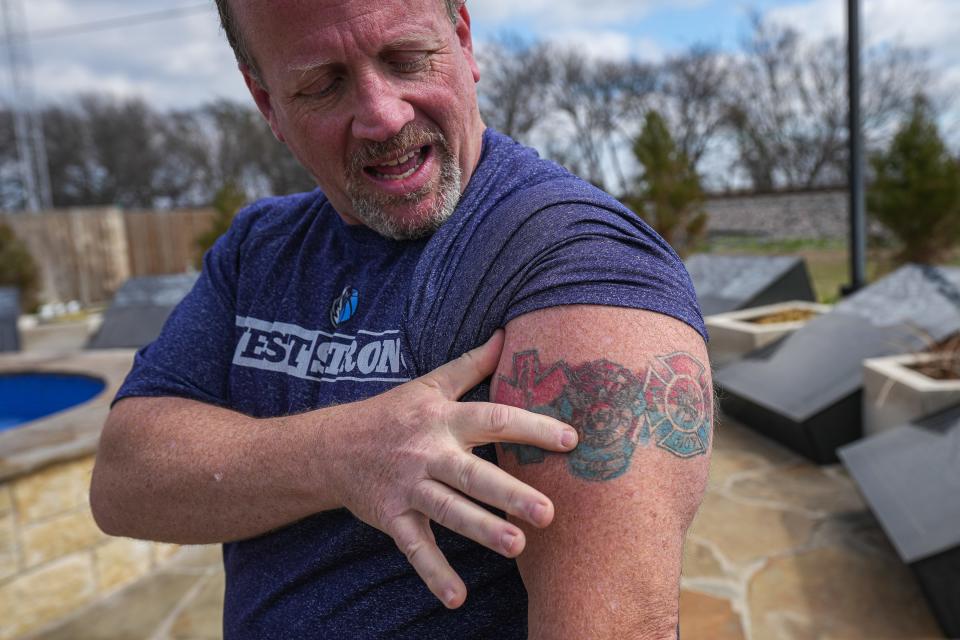
"You can't describe it," Kimberly Irving said of their deepening connection to Kelly. "You just sort of become family."
At work, however, guilt gnawed at Michael Irving for making the initial phone call that drew his friend to the fire and, ultimately, his death. The sight of the blown-out West Terrace apartments triggered his anxiety and crept into his nightmares. Not overtly emotional before the blast, Irving afterward would watch a poignant movie scene or hear a church hymn and be driven to tears.
“I thought, ‘I’ll never get past this,’” he said. “I needed help.”
In November 2014, 19 months after the explosion, Irving quit his job at the West Police Department. For the first time in his life, he didn’t immediately jump into his next job – instead he just focused on getting better. For three months, he attended weekly therapy sessions at Baylor University and began rebuilding his relationship with his wife. In 2016, she gave birth to Kadynce, a baby girl.
"Kadynce is the reason I was able to turn my life around," he said.
'I don't think we're any safer'
As Irving reclaimed his life, West rebuilt, too. New homes sprouted on residential streets pummeled by the blast. The West Terrace Apartment Complex, which stalked Irving's dreams, was razed and removed, as was the fertilizer plant.
The West Rest Haven nursing home rebuilt and expanded a block away from the former site. In the rec room of the new facility, a display case holds remnants of that night: Some loose bricks, a twisted length of rebar, a photo of the blown-in building.
Ever since that day, Morris has questioned what other unknown dangers lurk in silos and storage buildings in her community and others.
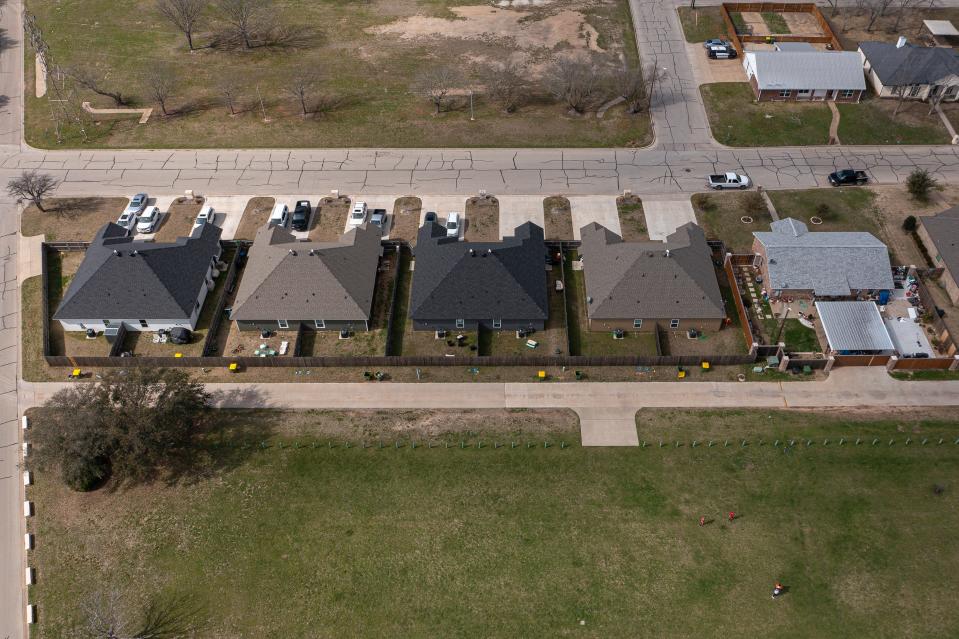
“I’m wondering what else can there be around here we don’t know about that could harm the residents,” she said.
Payne said he's proud of how West rebuilt and feels good about the changes made in local ordinances to better regulate companies dealing with ammonium nitrate. But that confidence doesn't extend to the rest of the USA, he said.
“There’s still a lot places around the country and probably around Texas that have ammonium nitrate too close to communities,” he said. “I don’t think we’re any safer. I don’t think those lessons were learned nationally.”
For Irving, the nightmares have mostly ceased and the anxiety has dwindled. Clusters of blinking police lights or the chemical smell of burning paint still trigger panic attacks. But they’re controllable now, he said.

The bad memories linger. But the good ones are there, too: The neighbors who drove up with trucks moments after the blast to ferry the wounded to hospitals. The Baylor University psychology students who helped him through his trauma. The West residents who rebuilt the town.
That, Irving said, is what he hopes people focus on on the anniversary of the worst day of his life.
"I hope people remember how everyone in that city came together," he said, "and got through it and came out stronger than they were before."
Follow Jervis on Twitter: @MrRJervis.
This article originally appeared on USA TODAY: 10 years after Texas chemical explosion, risk of another runs high

